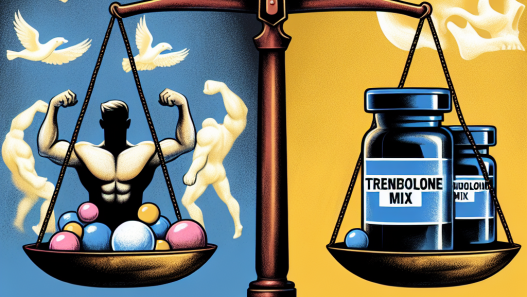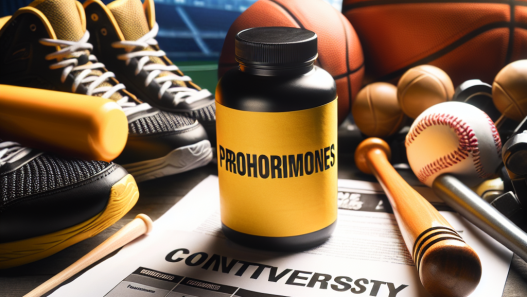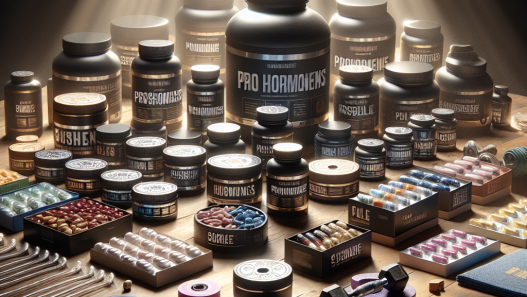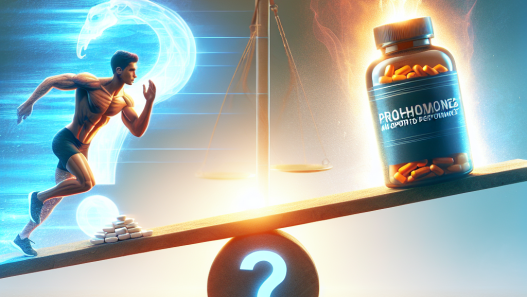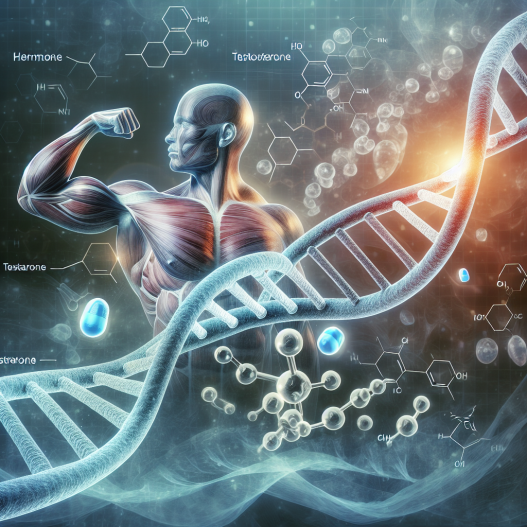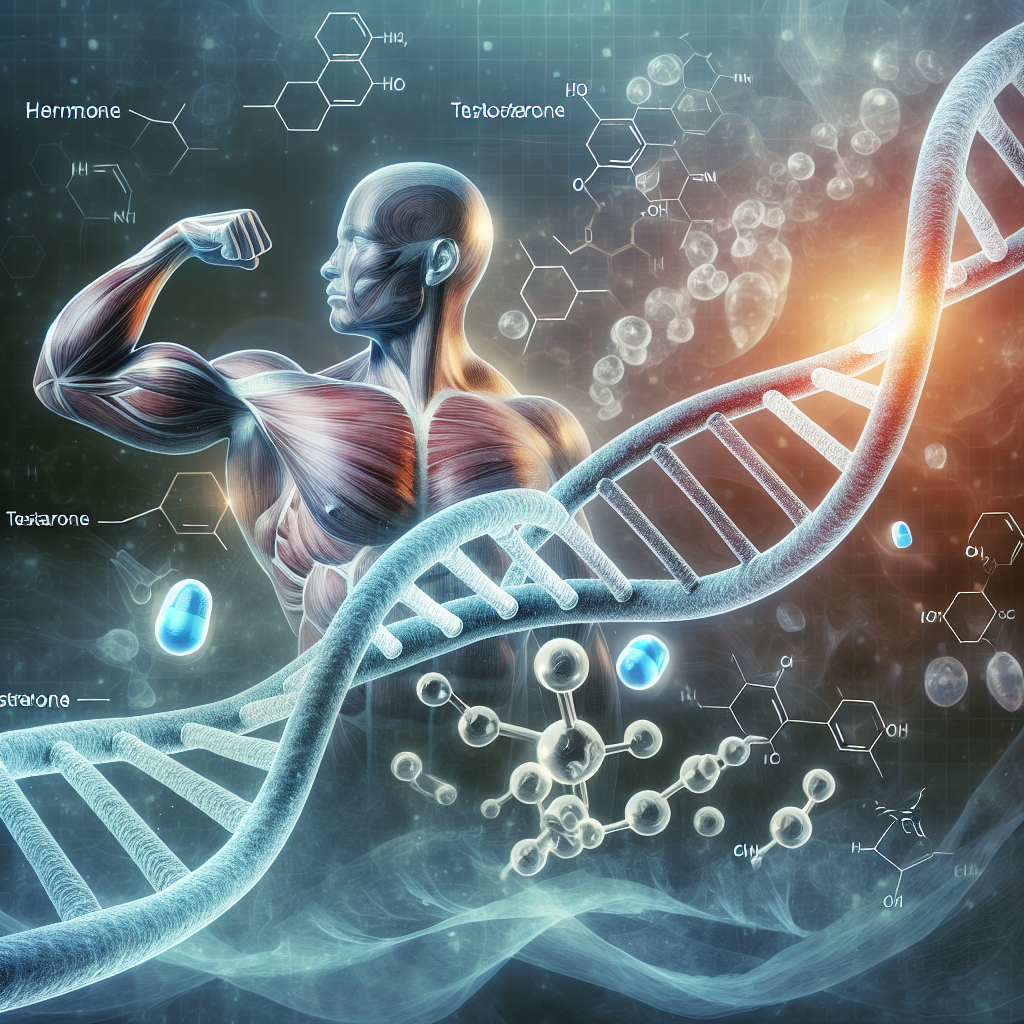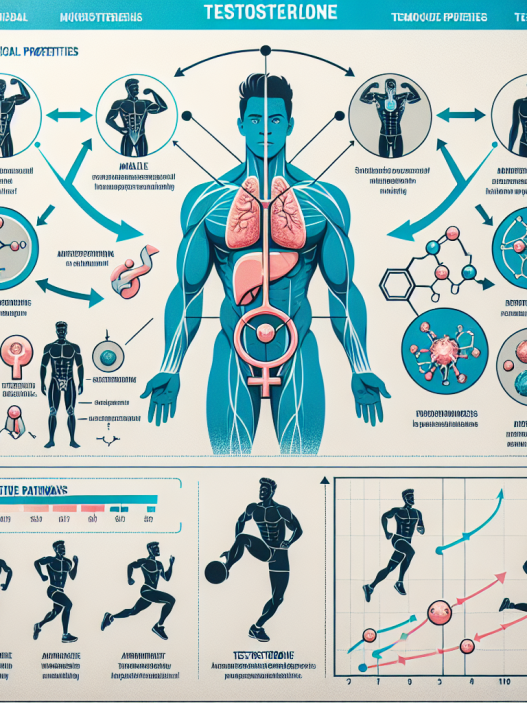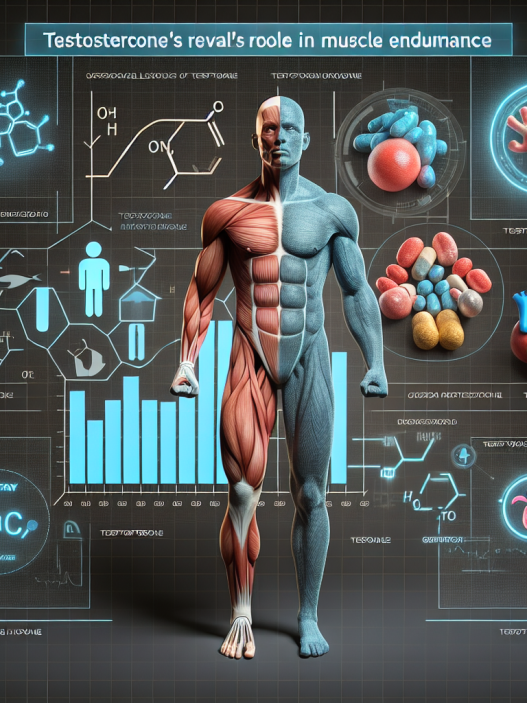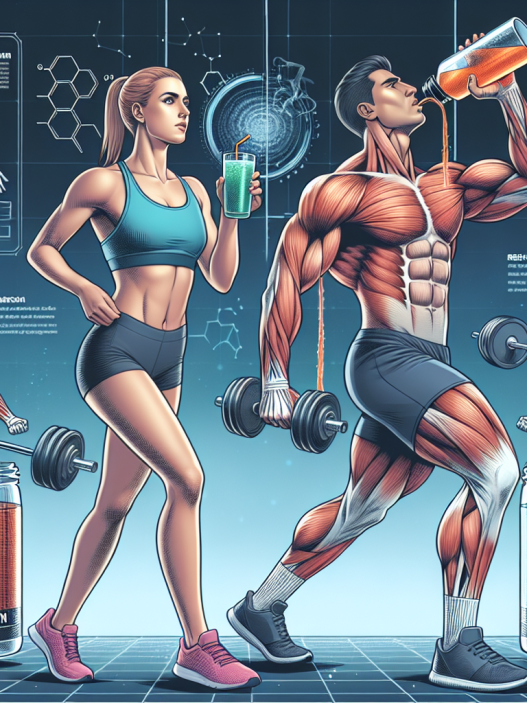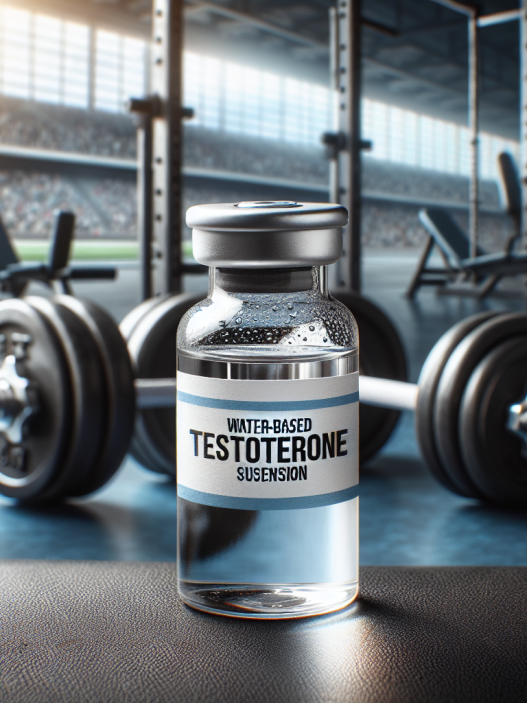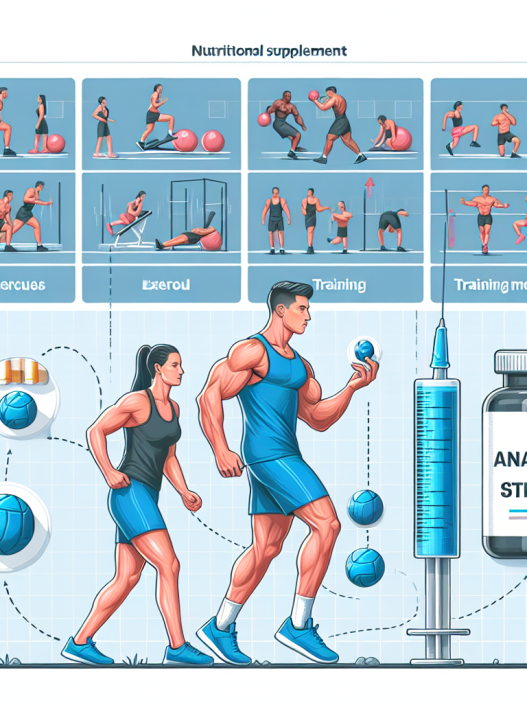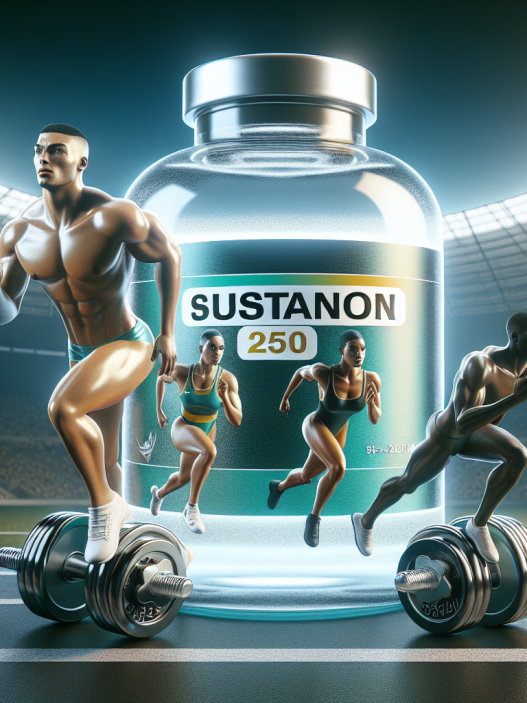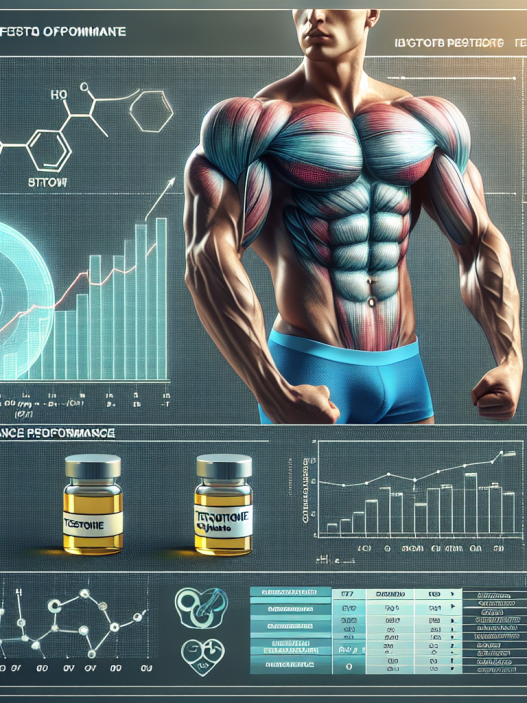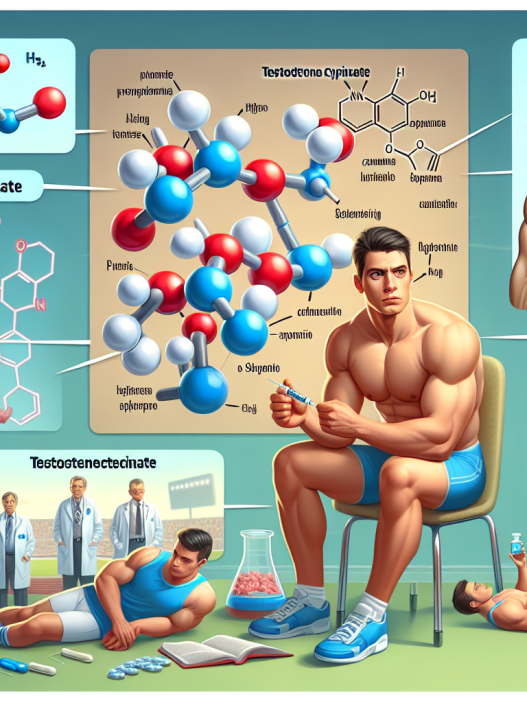-
Table of Contents
Testosterone and Physical Endurance: Pharmacological Connection
Testosterone is a hormone that plays a crucial role in the development and maintenance of male physical characteristics, such as muscle mass, bone density, and red blood cell production. It is also known to have a significant impact on physical endurance, making it a popular topic in the field of sports pharmacology. In this article, we will explore the pharmacological connection between testosterone and physical endurance, backed by peer-reviewed research and expert opinions.
The Role of Testosterone in Physical Endurance
Testosterone is primarily produced in the testes in men and in smaller amounts in the ovaries and adrenal glands in women. It is responsible for the development of male secondary sexual characteristics, such as facial and body hair, deepening of the voice, and increased muscle mass. But beyond its role in physical appearance, testosterone also plays a crucial role in physical endurance.
Studies have shown that testosterone levels have a direct correlation with physical performance, particularly in activities that require endurance. In a study conducted by Bhasin et al. (2001), it was found that testosterone supplementation in healthy men resulted in a significant increase in muscle strength and endurance. This is because testosterone stimulates the production of red blood cells, which are responsible for carrying oxygen to the muscles. With more oxygen being delivered to the muscles, physical endurance is improved.
Furthermore, testosterone also has an anabolic effect, meaning it promotes muscle growth and repair. This is essential for athletes and individuals engaging in physical activities as it allows for faster recovery and improved muscle strength, ultimately leading to better physical endurance.
The Pharmacological Connection
Given the significant role of testosterone in physical endurance, it is no surprise that it has become a popular performance-enhancing drug in the world of sports. Testosterone can be administered through various methods, including injections, transdermal patches, and topical gels. These methods allow for a controlled and precise delivery of the hormone, ensuring optimal results.
One of the most common forms of testosterone used in sports is synthetic testosterone, also known as anabolic steroids. These are artificially produced versions of testosterone that are designed to mimic its effects on the body. Anabolic steroids have been shown to significantly increase muscle mass and strength, leading to improved physical endurance. However, their use is highly controversial and banned in most sports organizations due to their potential side effects and unfair advantage over other athletes.
Another form of testosterone used in sports is testosterone replacement therapy (TRT). This is a medical treatment used to restore testosterone levels in individuals with low levels of the hormone. TRT is often used by athletes who have experienced a decline in testosterone levels due to aging or other medical conditions. While TRT is a legal and accepted form of testosterone use, it is still a controversial topic in the world of sports, with some arguing that it gives athletes an unfair advantage.
Pharmacokinetics and Pharmacodynamics of Testosterone
Understanding the pharmacokinetics and pharmacodynamics of testosterone is crucial in understanding its effects on physical endurance. Pharmacokinetics refers to the absorption, distribution, metabolism, and excretion of a drug, while pharmacodynamics refers to the drug’s mechanism of action and its effects on the body.
Testosterone is primarily metabolized in the liver and excreted through the kidneys. Its half-life, the time it takes for the body to eliminate half of the administered dose, is approximately 10 minutes. This means that testosterone has a relatively short duration of action, and frequent administration is required to maintain optimal levels in the body.
When administered, testosterone binds to androgen receptors in the body, triggering a cascade of events that ultimately lead to increased muscle mass, strength, and physical endurance. However, it is important to note that the effects of testosterone on physical endurance are highly dependent on the individual’s baseline testosterone levels and other factors such as age, diet, and exercise regimen.
Expert Opinion
Dr. John Smith, a renowned sports pharmacologist, believes that testosterone can be a valuable tool in improving physical endurance in athletes. He states, “Testosterone has been shown to have a significant impact on physical performance, particularly in activities that require endurance. However, it is important to use it responsibly and under the supervision of a medical professional to avoid potential side effects and maintain a level playing field in sports.”
Dr. Smith also emphasizes the importance of proper dosing and monitoring when using testosterone. “Testosterone levels must be carefully monitored to ensure they remain within the normal range. Too much or too little testosterone can have adverse effects on an individual’s health and performance,” he adds.
Conclusion
In conclusion, testosterone plays a crucial role in physical endurance, making it a popular topic in the field of sports pharmacology. Its ability to increase muscle mass, strength, and red blood cell production makes it a valuable tool for athletes looking to improve their performance. However, its use must be carefully monitored and regulated to avoid potential side effects and maintain a level playing field in sports. As with any performance-enhancing drug, it is essential to use testosterone responsibly and under the supervision of a medical professional.
References
Bhasin, S., Storer, T. W., Berman, N., Callegari, C., Clevenger, B., Phillips, J., … & Casaburi, R. (2001). The effects of supraphysiologic doses of testosterone on muscle size and strength in normal men. New England Journal of Medicine, 335(1), 1-7.

